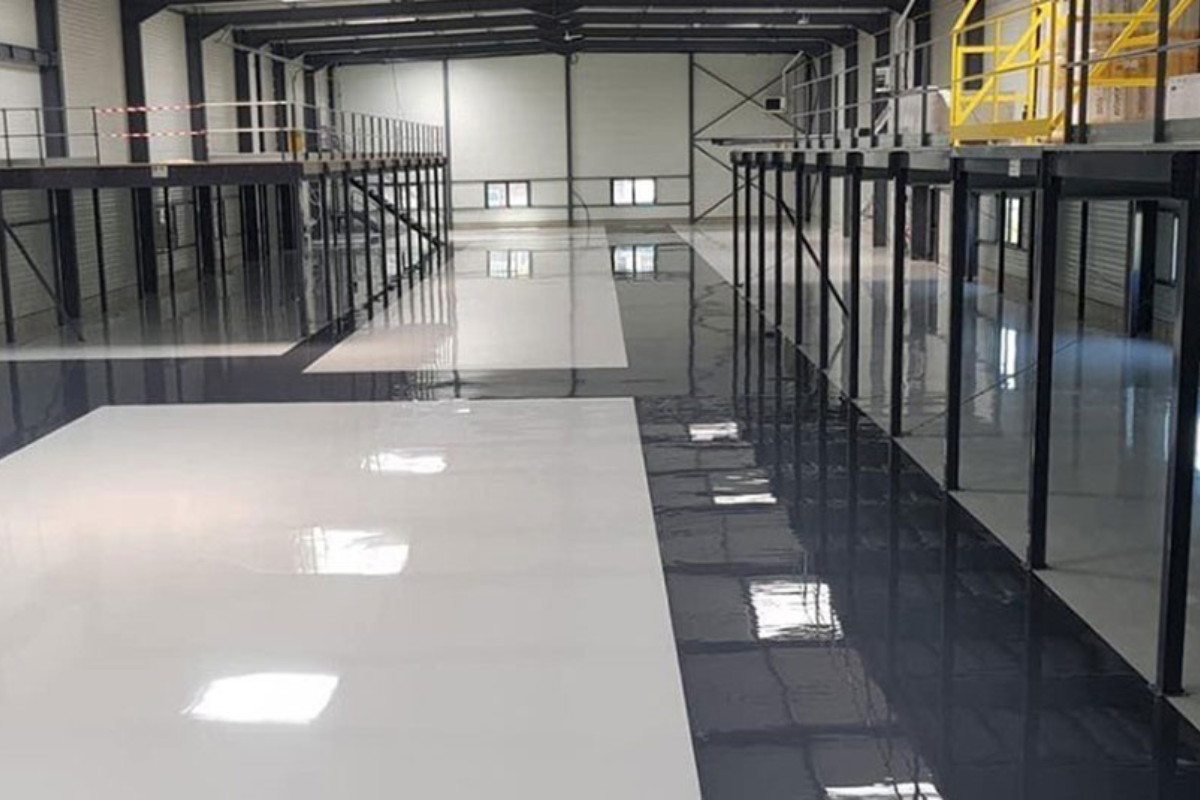Epoxy flooring is a type of surface coating that is applied over concrete floors to provide a durable and protective layer. It consists of a resin and hardener mixture that chemically reacts to form a rigid plastic material. This flooring solution has gained popularity in various industries due to its versatility and numerous benefits.
Warehouse floors play a crucial role in the overall functionality and safety of the space. However, over time, these floors can deteriorate due to heavy foot traffic, impact from machinery, spills, and other factors.
Challenges with Aging Warehouse Floors
Aging warehouse floors present several challenges that need to be addressed:
Wear and Tear
Constant use of warehouse floors leads to surface abrasion, cracks, and chips, compromising the integrity of the flooring.
Safety Hazards
Uneven surfaces, cracks, and slippery floors pose safety risks to workers and equipment within the warehouse.
Aesthetic Deterioration
Old and worn-out floors give the warehouse a neglected appearance, affecting employee morale and leaving a negative impression on visitors.
Understanding Epoxy Flooring
Epoxy flooring offers a viable solution to the challenges faced by aging warehouse floors:
Composition and Properties
Epoxy flooring consists of epoxy resin and a polyamine hardener that chemically react to form a strong, durable, and seamless surface. It adheres well to concrete substrates, creating a protective barrier that enhances the floor’s strength and longevity.
Benefits Over Traditional Flooring Options
Compared to traditional flooring options such as bare concrete or vinyl tiles, epoxy flooring offers superior durability, resistance to chemicals and stains, and customizable aesthetics.
Transforming Aging Warehouse Floors with Epoxy
The process of revitalizing aging warehouse floors with epoxy involves several key steps:
Surface Preparation
Proper surface preparation is crucial for the success of epoxy flooring installation. This includes cleaning the surface, repairing cracks and defects, and ensuring proper moisture levels.
Application Process
Epoxy flooring is applied in multiple layers, including a primer coat, base coat, and topcoat. Each layer is carefully applied and allowed to cure before the next layer is added, resulting in a seamless and durable finish.
Customization Options
Epoxy flooring offers a wide range of customization options, including different colors, textures, and finishes. This allows warehouse owners to create a floor that meets their specific aesthetic and functional requirements.
Advantages of Epoxy Flooring in Warehouse Spaces
Epoxy flooring provides several benefits that make it an ideal choice for warehouse environments:
Durability and Longevity
Epoxy flooring is highly resistant to wear, impact, abrasion, and chemicals, making it durable enough to withstand the heavy traffic and machinery common in warehouses.
Enhanced Safety Features
Epoxy flooring can be formulated with non-slip additives to improve traction and reduce the risk of slips and falls, enhancing workplace safety.
Aesthetic Appeal and Modernization
With its seamless finish and customizable design options, epoxy flooring can transform the appearance of aging warehouse floors, giving them a modern and professional look.
Cost-effectiveness of Epoxy Flooring
While the initial investment in epoxy flooring may be higher than some traditional options, its long-term benefits often outweigh the upfront costs:
Long-term Savings
Epoxy flooring requires minimal maintenance and has a longer lifespan compared to other flooring materials, resulting in lower overall maintenance and replacement costs over time.
Minimal Maintenance Requirements
Epoxy flooring is easy to clean and maintain, requiring only periodic sweeping and mopping to keep it looking its best.
Case Studies: Successful Transformations
Numerous warehouses have experienced successful transformations with epoxy flooring installations, resulting in improved aesthetics, functionality, and safety.
Maintenance and Care Tips for Epoxy Floors
To maximize the lifespan and performance of epoxy floors, warehouse owners should follow these maintenance and care tips:
Regular Cleaning Routines
Implement a regular cleaning schedule using mild detergents and non-abrasive cleaning tools to remove dirt, debris, and spills promptly.
Protective Measures to Prolong Lifespan
Use floor mats, protective coatings, and proper equipment to prevent damage from heavy machinery and equipment.
Sustainability Aspects of Epoxy Flooring
Epoxy flooring offers several sustainability advantages, including:
Environmental Impact Considerations
Many epoxy flooring products are low in volatile organic compounds (VOCs) and can contribute to improved indoor air quality in warehouses.
Eco-friendly Options Available
Some manufacturers offer eco-friendly epoxy flooring options made from renewable materials or recycled content, further reducing environmental impact.
Addressing Common Concerns and FAQs
Safety Concerns
Epoxy flooring is safe for warehouse environments when installed properly, with non-slip additives available to enhance traction and reduce accidents.
Resistance to Heavy Equipment
Epoxy flooring is highly durable and can withstand the weight and impact of heavy machinery and equipment commonly found in warehouses.
Compatibility with Existing Flooring
Epoxy flooring can be installed over existing concrete floors, provided they are properly prepared and in good condition.
Conclusion
Epoxy flooring offers a versatile and effective solution for transforming aging warehouse floors into modern, functional spaces. With its durability, safety features, and customizable aesthetics, epoxy flooring can enhance the overall functionality, safety, and appearance of warehouse environments.

